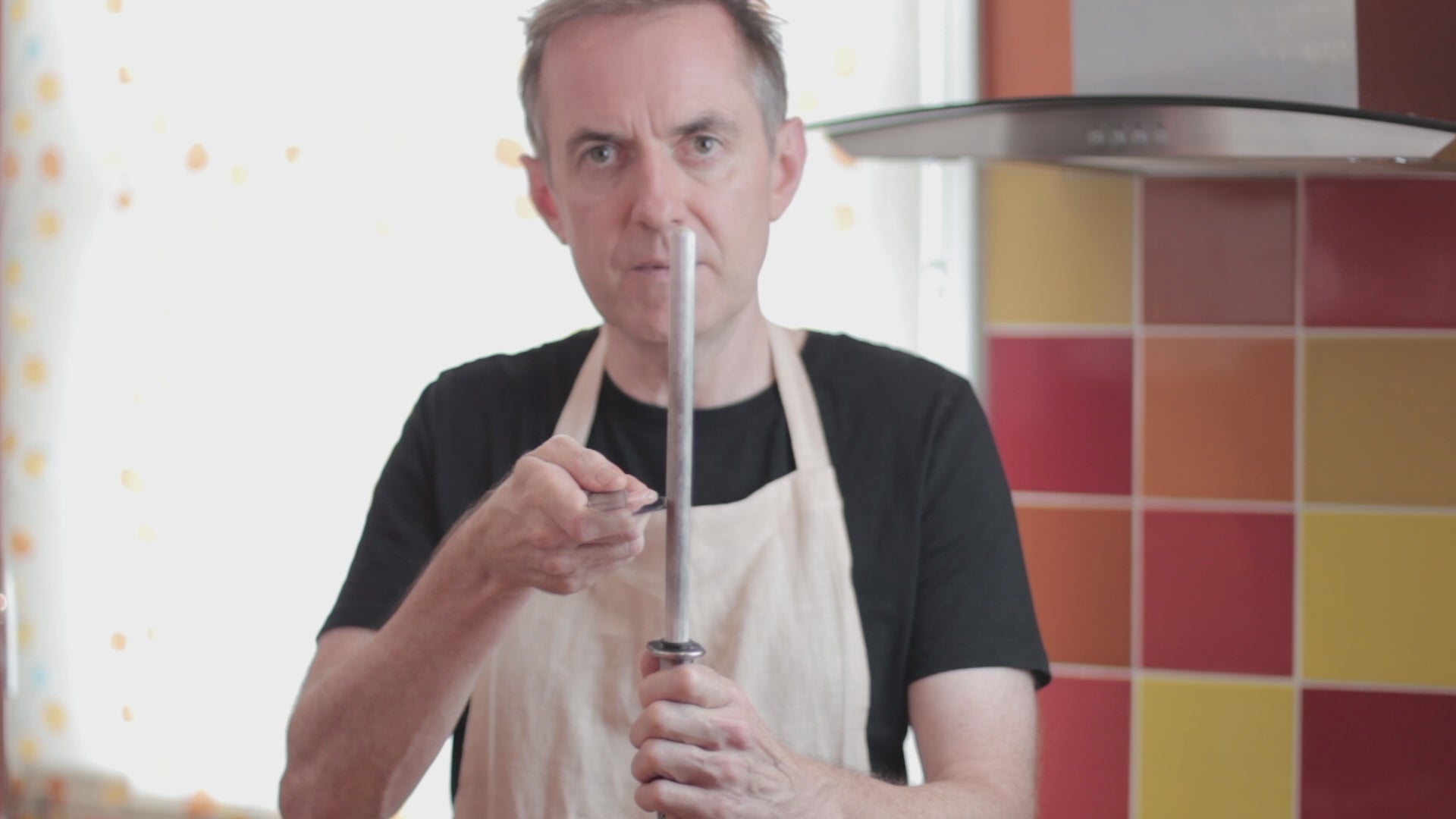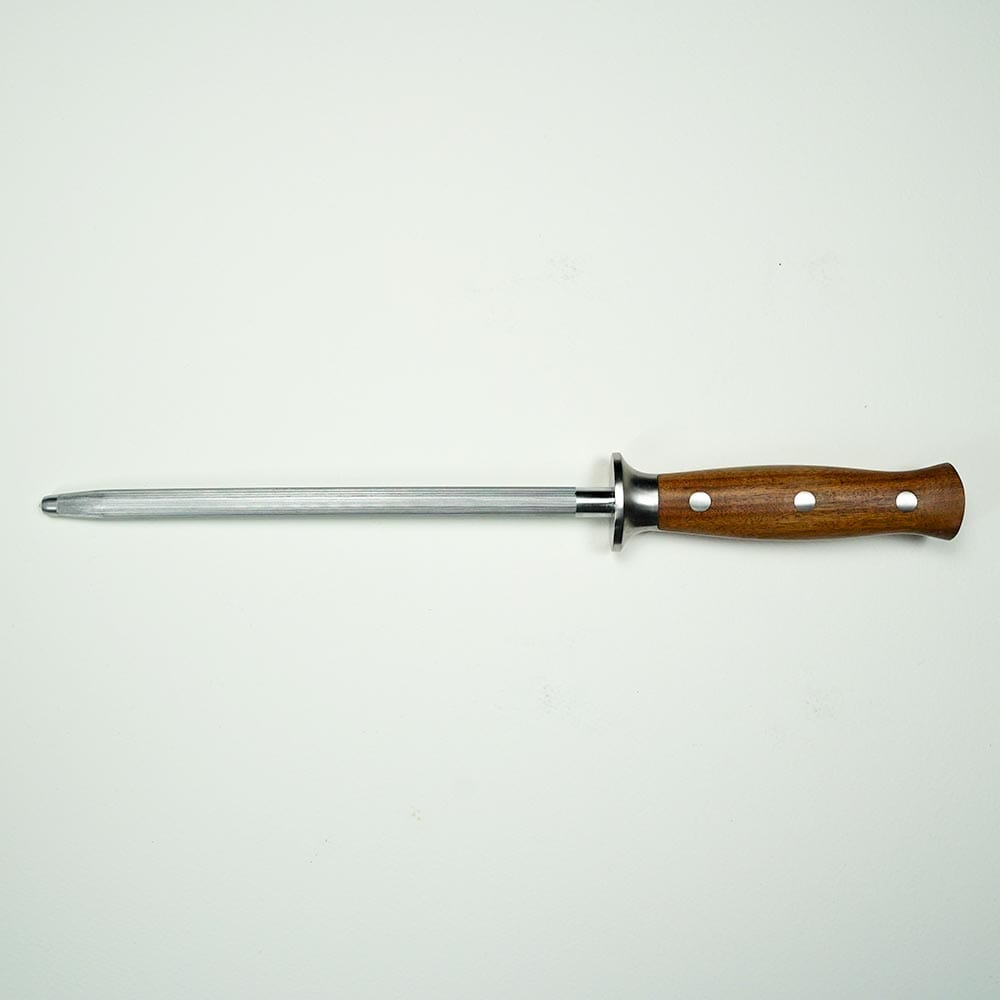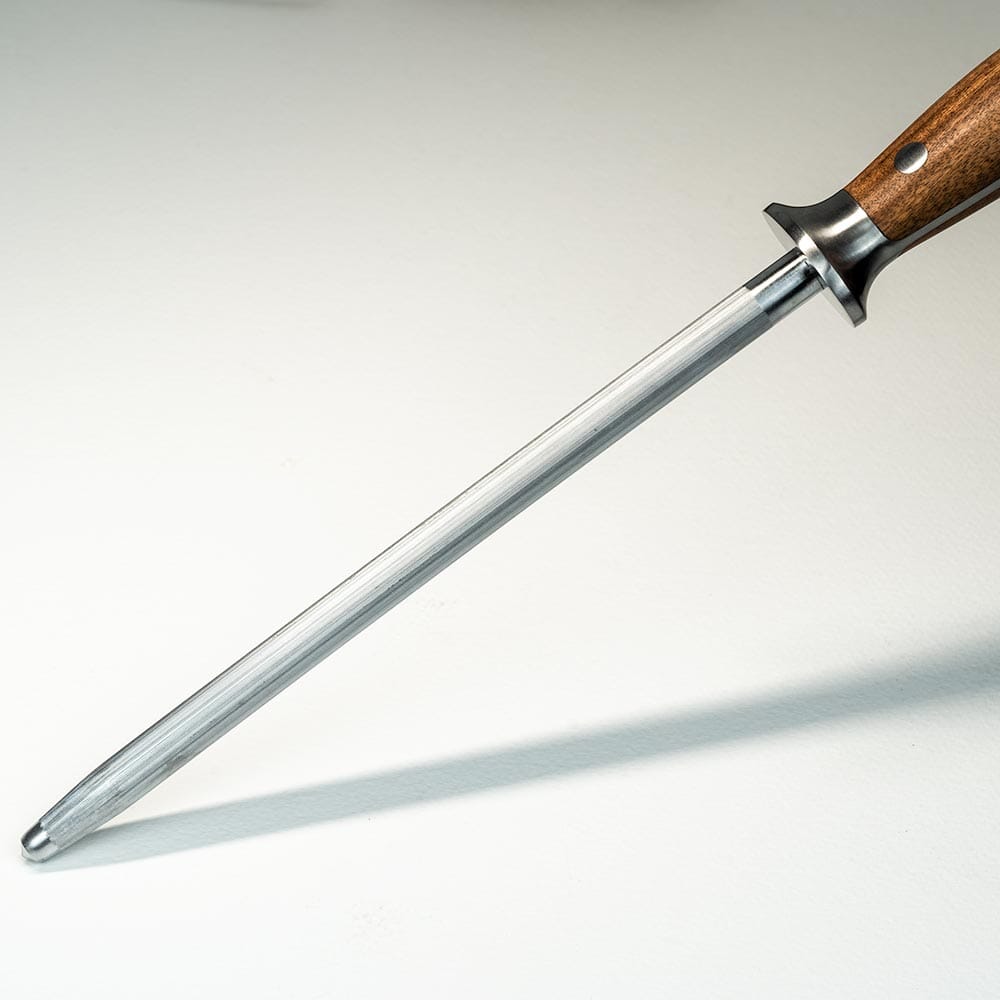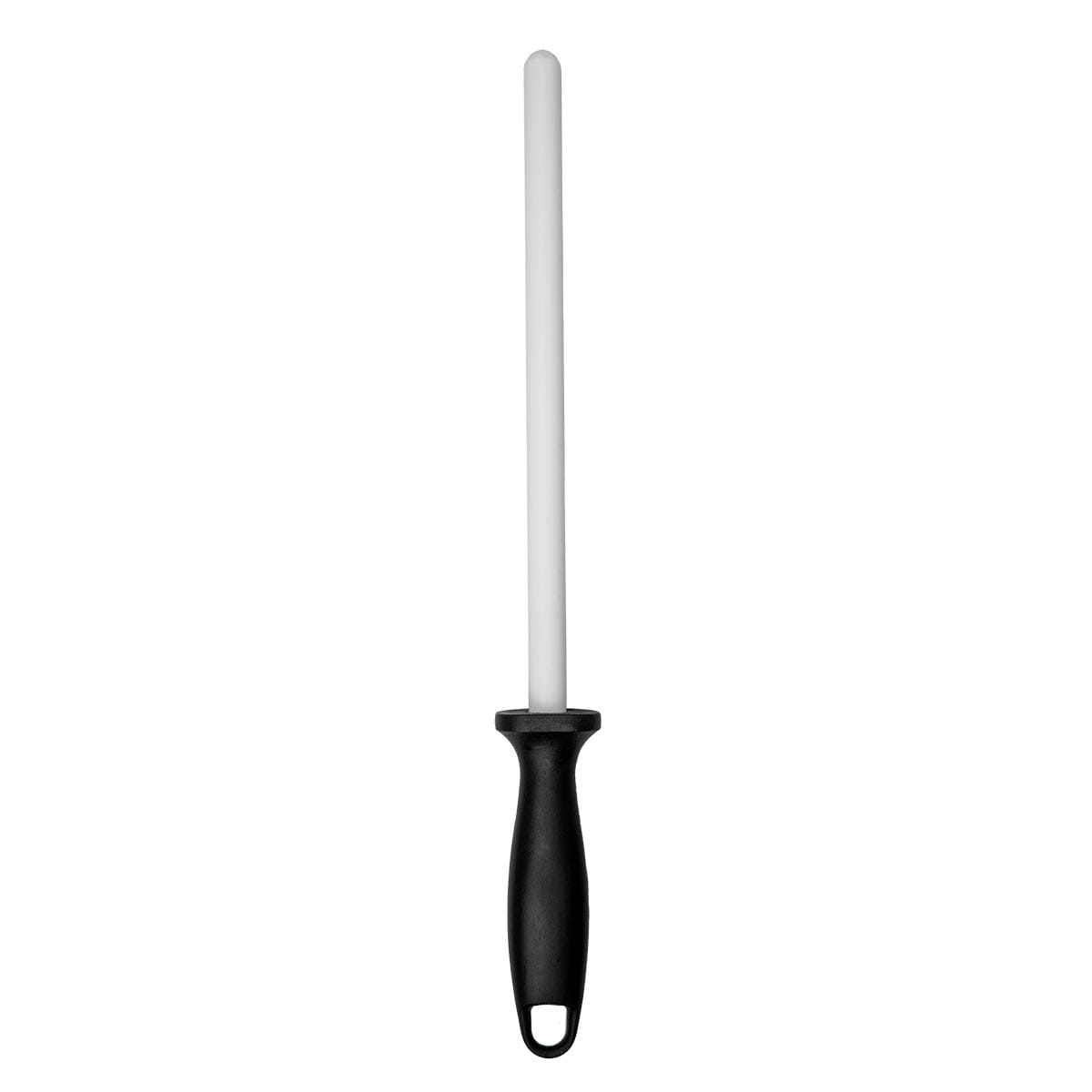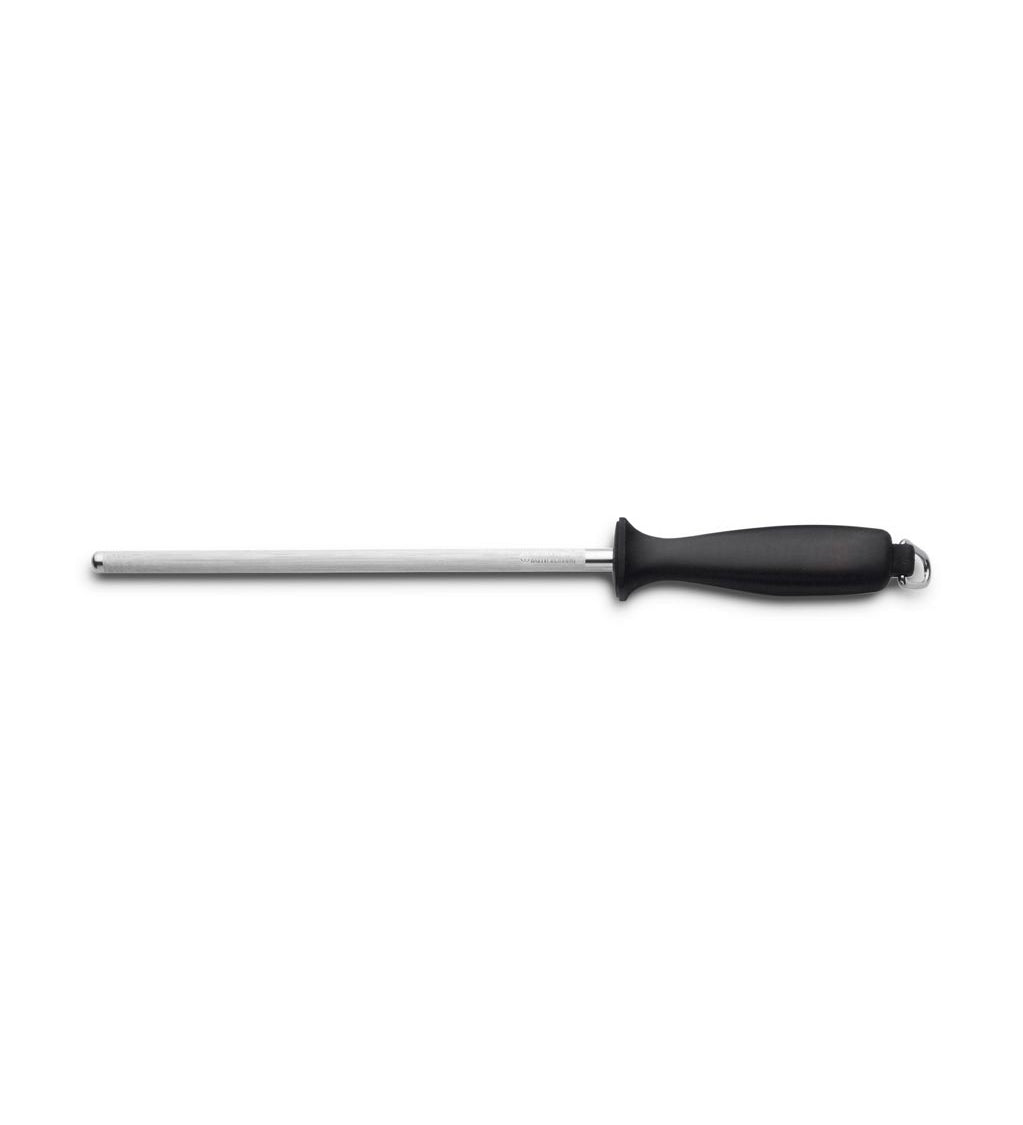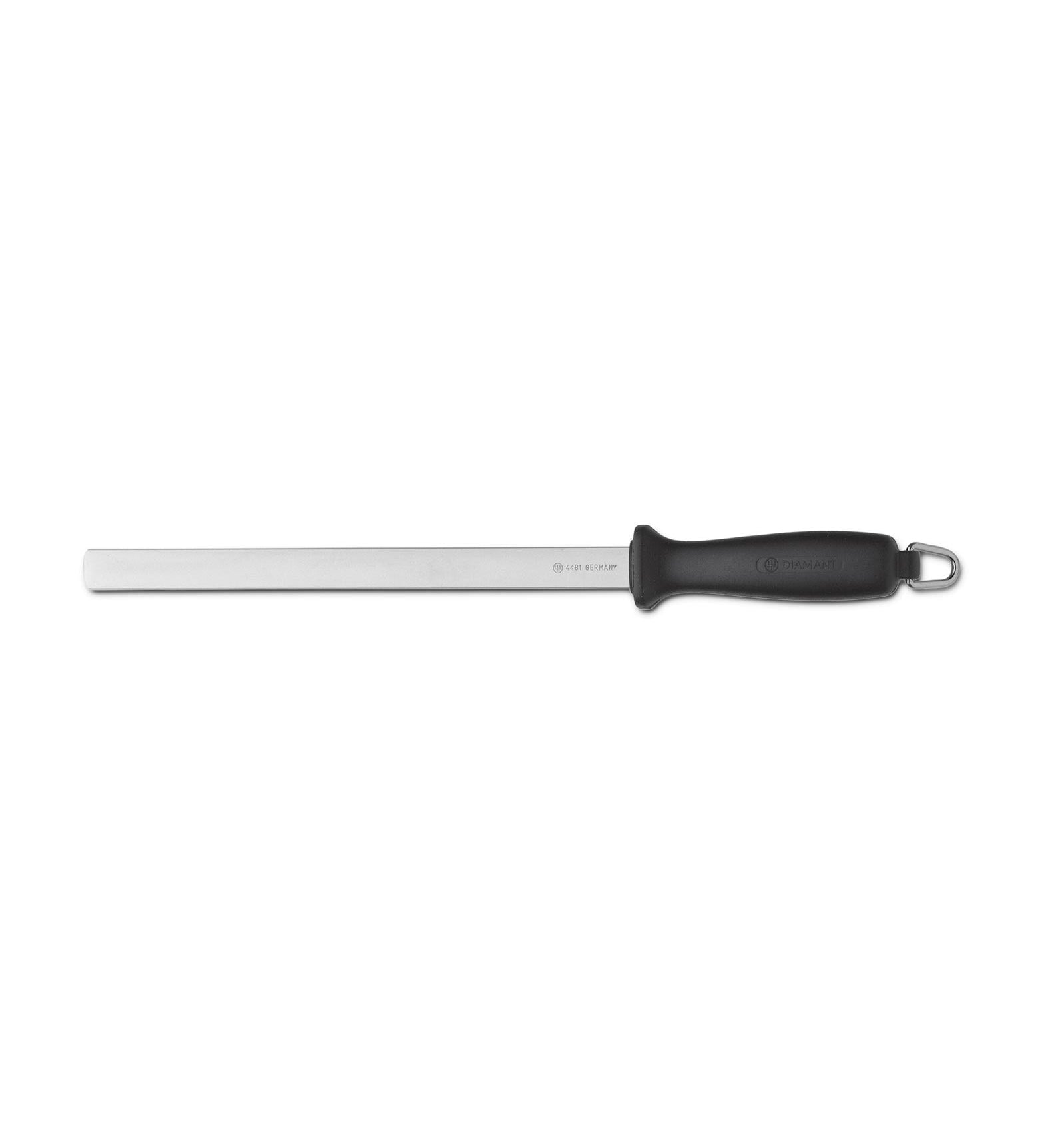Honing Steels
The key thing to bear in mind with a honing steel steel is they're designed to maintain sharp knives, not sharpen blunt knives. The exception being the more abrasive diamond steels.
Technically not a sharpener as such, a steel is a great way of honing a knife. The edge of a knife can become blunt simply because tiny particles on the edge becomes bent – honing straightens these microscopic bends. This is something a chef would usually do before each service, and the steel is designed to be used frequently before cooking to keep the edge in line.
The easiest way to get the correct angle is to place the Steel tip-down on a work surface so it’s vertical. Then hold the knife tip against it so the knife’s at a horizontal (90°) angle. Halve the angle (90°) halve again (22°) and take a tiny bit off and you should be at the correct angle for European knives (20°). For Japanese knives, (10-15°), take a tiny bit more off.
Sharpen using a dragging motion, not pushing downwards as if you're cutting something, alternating each side. Just the weight of the knife should be sufficient pressure.
As Japanese knives are sharpened to 10-15°, metal would be too coarse and would damage such a fine edge, so ceramic is usually used for honing Japanese knives. This can be done with either a ceramic steel or the fine side of a whetstone.
Our pick of the best sharpening steels
Newsletter
Join us
Subscribe to get news, exclusive offers and seasonal inspiration.

